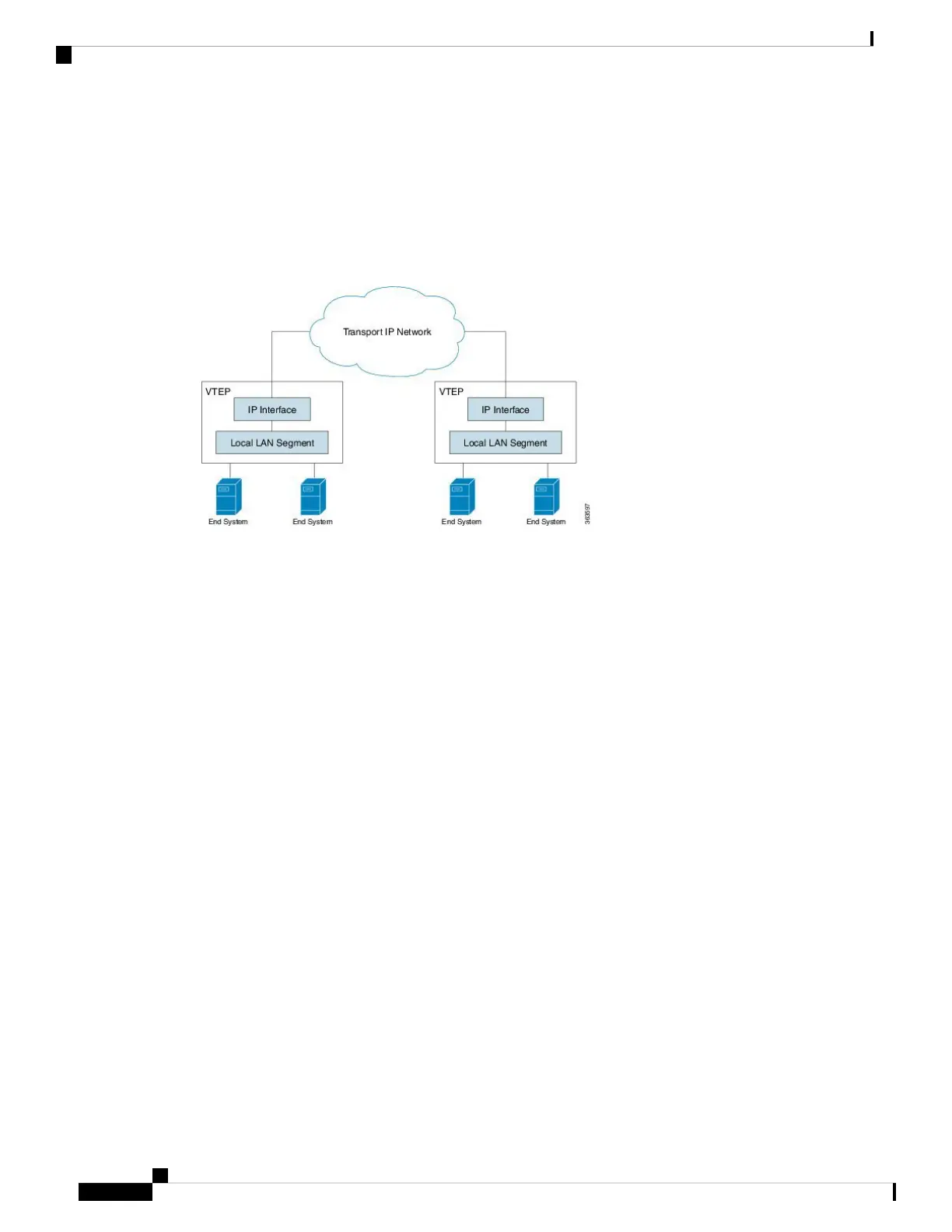The IP interface has a unique IP address that identifies the VTEP device on the transport IP network known
as the infrastructure VLAN. The VTEP device uses this IP address to encapsulate Ethernet frames and transmits
the encapsulated packets to the transport network through the IP interface. A VTEP device also discovers the
remote VTEPs for its VXLAN segments and learns remote MAC Address-to-VTEP mappings through its IP
interface. The functional components of VTEPs and the logical topology that is created for Layer 2 connectivity
across the transport IP network is shown in the following figure.
Figure 68: VTEP
The VXLAN segments are independent of the underlying network topology; conversely, the underlying IP
network between VTEPs is independent of the VXLAN overlay. It routes the encapsulated packets based on
the outer IP address header, which has the initiating VTEP as the source IP address and the terminating VTEP
as the destination IP address.
Configuring a Layer 2 VXLAN gateway
A Layer 2 VXLAN gateway bridges traffic between VXLAN and non-VXLAN segments (such as VLAN or
VPLS) within the same layer 2 network. The operation of a VXLAN Layer 2 gateway is based on the data
plane MAC address learning and flooding of multi-destination traffic such as unknown unicast, multicast, or
broadcast frames, using IP multicast. The following sections show how to configure an ASR 9000 series
router as a Layer 2 VXLAN gateway between a VLAN and a VXLAN segment in the same L2 domain.
Prerequisites
The following are the prerequisites to configuring a Cisco ASR 9000 series router as a VXLAN Layer 2
gateway:
• Configure a loopback interface. It serves as a source interface for the local VTEP.
• Configure unicast reachability to remote VTEPs.
• Configure Bidirectional Protocol Independent Multicast (Bidir PIM) or PIM Sparse Mode. For more
information, see the Multicast Configuration Guide for Cisco ASR 9000 Series Routers.
Restrictions
Consider the following restrictions while configuring VXLAN:
L2VPN and Ethernet Services Configuration Guide for Cisco ASR 9000 Series Routers, IOS XR Release 6.3.x
476
Implementing VXLAN
Configuring a Layer 2 VXLAN gateway

